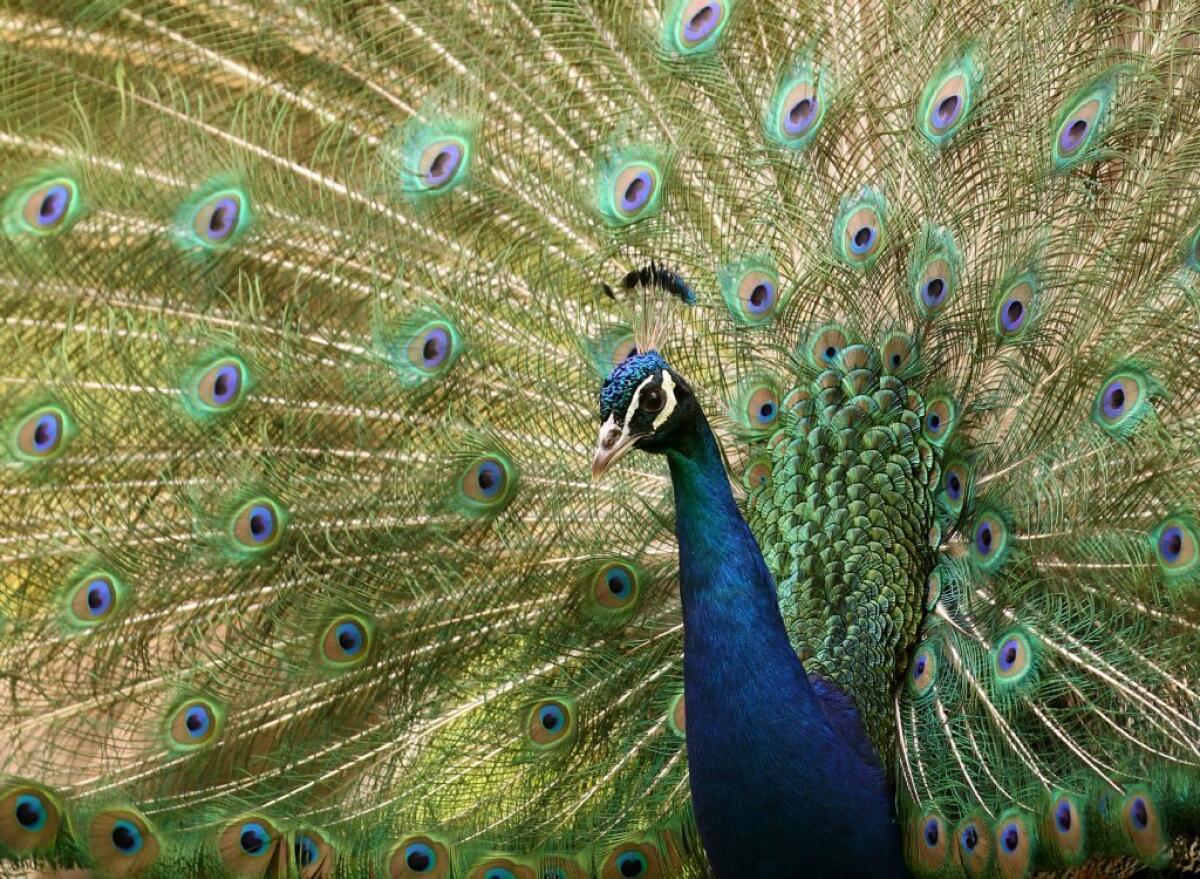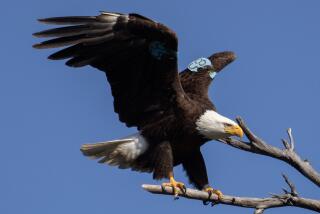Before mating with peacocks, females check out males’ backsides

When it comes to picking peacocks, beauty is in the eye of the peahen. But what, precisely, does a peahen look for in a mate’s ornately feathered displays? Gentlemen of a plumed persuasion, take note: The ladies spend a lot of time checking out the bottom half.
It’s long been known that peacocks, the males of the species known for their brilliant jewel-toned plumage, show off their sapphire-and-emerald assets to attract a female. The peahens inspect the peacocks before deciding whether or not to mate with them. But peacock plumage has a lot going on -- wings, tail feathers, eyespots all over -- and it’s been unclear which parts play the pivotal roles in making that decision.
For a study published in the Journal of Experimental Biology, researchers from UC Davis and Duke University outfitted peahens with a headpiece that had two cameras. The first camera used an infrared light to track the peahen’s eye movements. The second camera simultaneously looked outward at the peahen’s field of view, to capture whatever she was watching.
Meanwhile, they also had cameras set up in the corners of the birds’ enclosure, to watch their movements. The peahen would first check out the back (or side) of a peacock while the hopeful suitor would intermittently shake his wings in what the researchers termed a “backside display.” The peacocks would occasionally turn around and show off their brilliantly colored bodies from the front, too.
In spite of the peacock’s best efforts, the peahen watched the male only 27.5% of the time. Most of the remaining time was spent looking at the environment (including another male in the enclosure, regardless of whether or not he was actually showing off for the female).
“Given that females spent less than one-third of their time gazing at the displaying male, it is not surprising that females often appear to human observers as coy and uninterested in males,” the authors wrote.
Of that fraction of time, from both front and back, the females were more likely to look at a male’s lower eyespots, lower fish tails and its densely feathered area. They paid much less attention to the upper part of the train.
But the researchers also found that when a train’s lower parts were obscured, the birds spent more time looking at the upper region.
“Our results suggest that peahens mainly evaluate the lower train during close-up courtship but use the upper train as a long-distance attraction signal,” the researchers wrote.
The upper and lower parts of a peacock’s plumage, the authors said, may work together in order to capture the fickle heart of a peahen.







